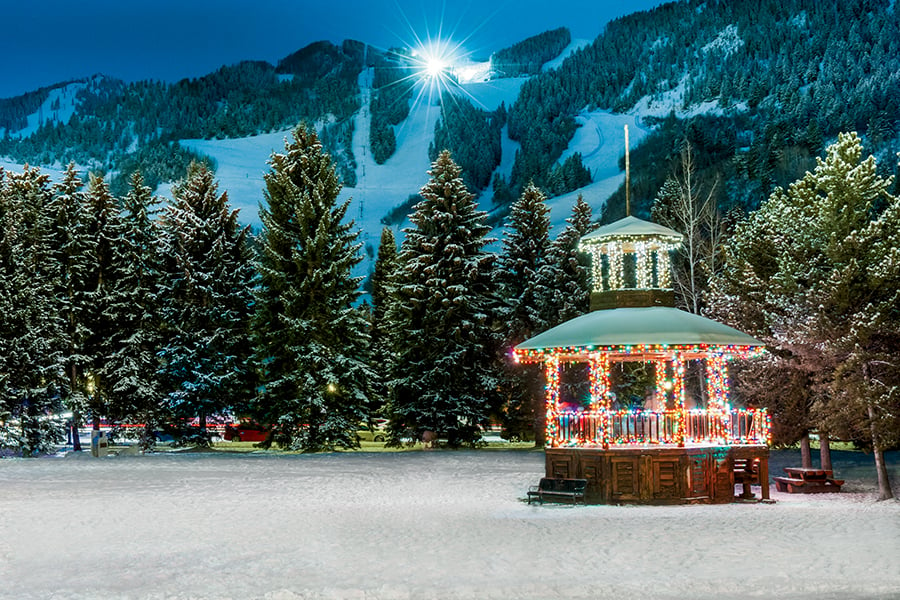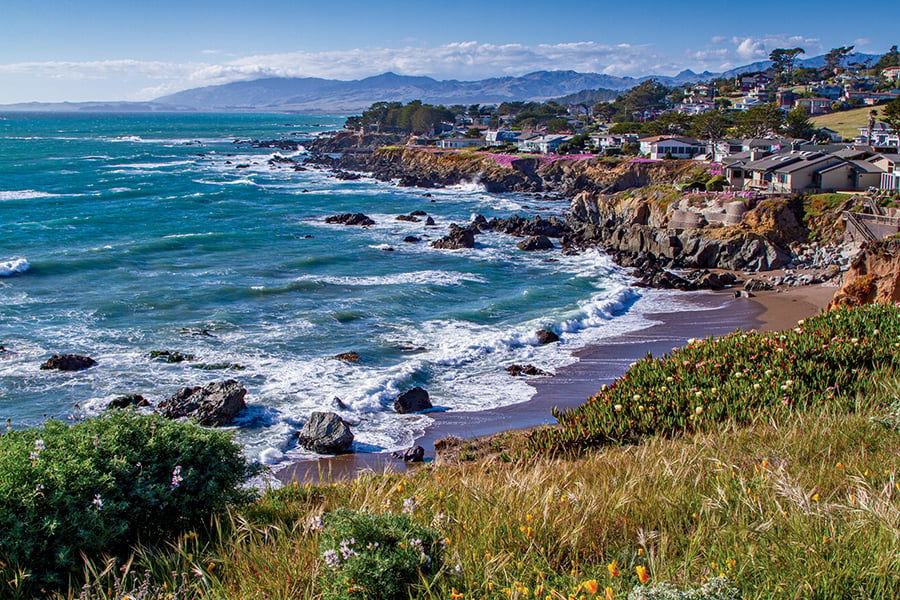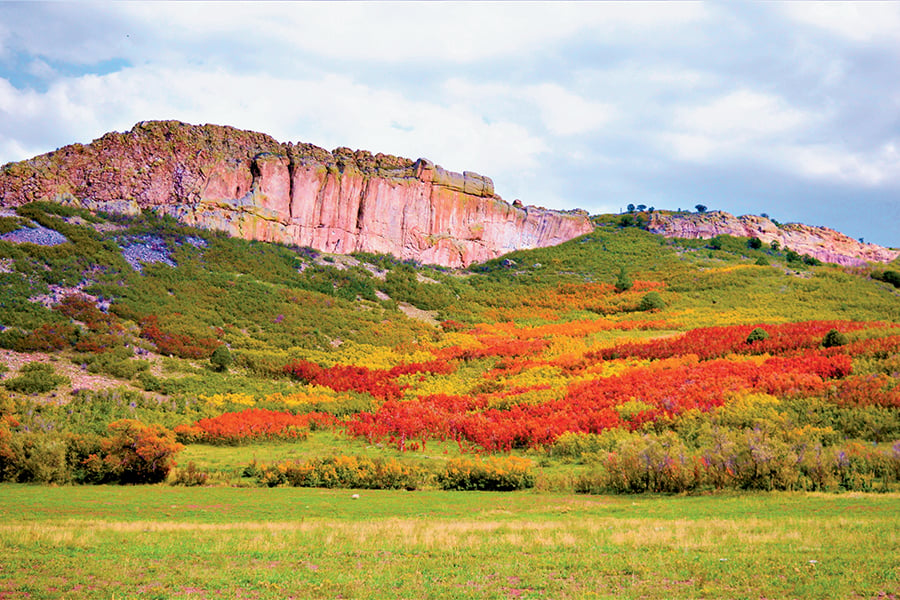Dark Sky Destinations: Lights out, stars on

Colorado’s Rocky Mountain region is blessed with clear skies, high altitude, and public lands, which makes it an ideal spot for stargazing. Many of our state’s rural communities are celebrating their designation as a dark-sky destination by the International Dark-Sky Association, which aims to protect the night skies from light pollution (the excess use of artificial light) for generations to come.
With several locations across the state, many Coloradans are packing up the family and taking to the road to discover these nightly demonstrations of incredible astronomy. Here are just a few locations to gaze up and view the constellations, planets, meteor showers, and shooting stars.
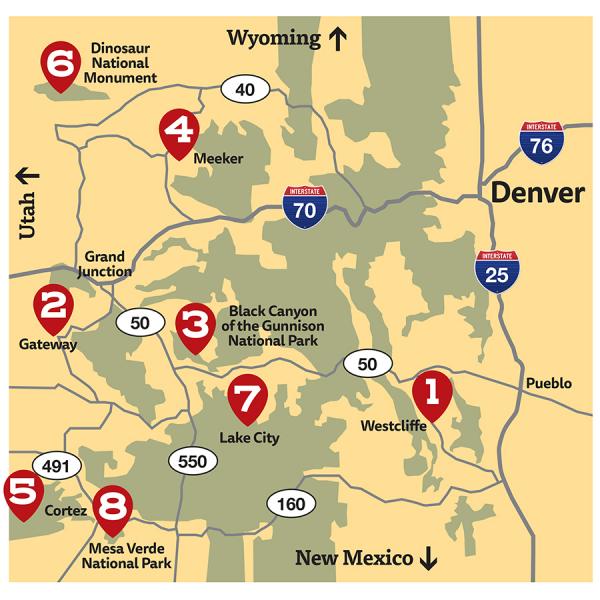
THE OG
1. Smokey Jack Observatory
Westcliffe and Silver Cliff
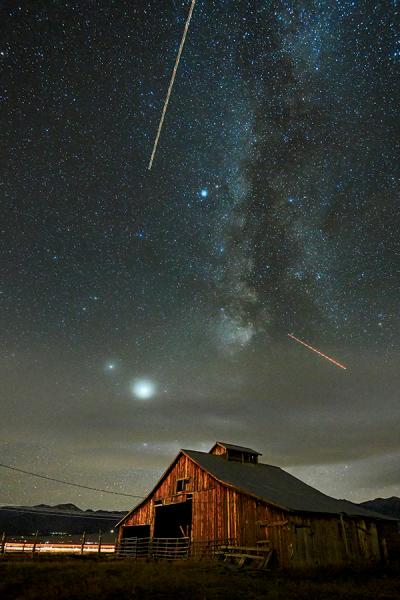
Star trails and moonlight accentuate a rustic barn behind the sparsely populated town of Westcliffe. © Chad Chisholm
Located in the valley between the Wet and Sangre de Cristo mountain ranges, the towns of Westcliffe and Silver Cliff (one mile apart) were the first International Dark-Sky Communities of Colorado, with nighttime light laws, low population numbers, and exceptional, organized constellation education.
The Smokey Jack Observatory (SJO), situated in The Bluff Park at the west end of Main Street in Westcliffe, offers free and private star parties from May to October, based on astronomical events. SJO was named in honor of Suzanne B. Jack (1946-2004), known to all as Smokey Jack, the founder and first Dark Skies’ President. She was enchanted by the Wet Mountain Valley and yearned for all to admire and access the Milky Way.
You can also learn about astronomy from educational speakers, discover how to take advanced nighttime photos, ascertain which telescope is best for you, and more.
POOL WITH A VIEW
2. Gateway Canyons Resort
Gateway
The Gateway Canyons Resort is one of the most remote and exclusive havens in the Western U.S., cradling the Utah and Colorado border. The AAA Four Diamond-designated, 8,700-acre resort, located in Unaweep Canyon, is about a 45-minute drive from Grand Junction, and near the small town of Gateway (pop. 200)—both essential components that minimize artificial evening light.
Snag a chaise lounge at the Palisade pool (May to Oct.) for an unfolding of extreme drama come sunset. This is the perfect spot for a first-timer. It’s easily accessed, and the resort offers a seasonal stargazing class and rental equipment to access the astronomical wonders.
BLACKEST OF NIGHTS
3. Black Canyon of the Gunnison National Park
Montrose
Certified as an International Dark-Sky Park in 2015, Black Canyon of the Gunnison National Park is the least visited National Park in Colorado, which actually bodes well for spectacular stargazing opportunities. In some areas of the park, it’s possible to see as many as 5,000 stars during the night. Parameters have been established to limit the amount of artificial light to capitalize on the evening magic. The Black Canyon Astronomical Society works with park rangers and volunteers to provide free nighttime events, which have been attended by thousands over the years.
TINY GATHERINGS
4. Trail and Hitch RV Park and Tiny Home Hotel
Meeker
Tiny homes, campsites, and RVs are trending to be high demand this summer, and they’re also an ideal scenario for elliptical evenings. Trail and Hitch, a 20-acre property in Meeker, known for hunting and fishing, is also a stargazing mecca. The tiny home operation is 100 miles northeast of Grand Junction and 225 miles west of Denver, avoiding any major city nighttime lights.
The newest and sleekest tiny homes, including one originally built for HGTV, are situated in a circle facing one another. The community space is the best place to set up for family cosmic viewing. Bring binoculars or your telescope and stop by the host building to pick up a history of the area and a list that shows which constellations are viewable each season.
STARS AND SHEEP
5. Canyons of the Ancient Guest Ranch
Cortez
The Canyons of the Ancient Guest Ranch spreads out over nearly 2,000 acres and is filled with a roaming herd of 200 Navajo Churro sheep, 30 head of cattle, and a menagerie of working dogs, chickens, and other critters. There are five guest houses to rent, all with Native American décor, as well as fully equipped kitchens, patios, swinging benches, stunning views of McElmo Canyon, and endless opportunity for starry skies.
“Our dark skies are incredible,” says the ranch’s co-owner, Garry Adams. “The Milky Way is usually visible, and you can often see the rare star cluster of the Pleiades (seven sisters). The naked eye is all you need; however, binoculars can certainly enhance the illuminations. Sometimes we even see objects we just can’t explain. Each night is simply different.”
THROUGH THE HEART OF THE DINOSAUR
6. Dinosaur National Monument
Dinosaur
Dinosaur National Monument is another Colorado International Dark-Sky Park, and the Yampa River, the last undammed tributary of the Colorado River system, with Class III and IV rapids, flows right through it. From May through July, OARS, a 50-plus-year-old rafting company, offers one of the most intimate experiences with the Milky Way, taking guests alongside deep, colorful canyons, sandy beaches, and where the skies are void of man-made obstructions and lights.
“Over the course of either a three- or four-night trip, guests can view the sunrise and sunset behind towering canyon walls more than 150 million years in the making. They’ll be able to see the brilliance of Scorpio and the Summer Triangle in the night sky from one of the darkest places in the Colorado Plateau,” explains Steve Markle, vice president of sales and marketing for OARS.
PRESERVING THE FUTURE
7. Slumgullion Center Dark Sky Park
Lake City
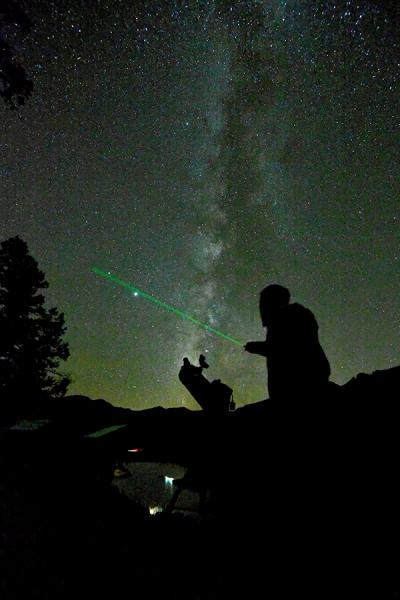
Phillip “Starman” Virden directs his laser beam to the evening sky above Lake City, Colo. © Chad Chisholm
Lake City claims to be the most remote area in the lower 48 States. With a town of fewer than 400 residents, outside light is easily blocked by the vast mountains surrounding this boutique, historical hamlet. A brand-new stargazing splendor includes the 58-acre Slumgullion Center Dark Sky Park—undeveloped, with no lighting—where all future development will meet the International Dark Sky Association standards to prevent light pollution. Additionally, astronomy programs are being planned on Slumgullion Pass and in-town, utilizing Lake City Community School’s portable planetarium. “We want to do everything possible to preserve this unique setting for our children, grandchildren, and all future generations who live and visit here,” explains Phillip “Starman” Virden.
NEWEST DESIGNATION
8. Mesa Verde National Park
Cortez
Mesa Verde National Park was recently designated the 100th International Dark-Sky Park this spring. The highly coveted honor helps educate visitors about the spiritual and practical connections of the ancient communities, such as the Ancestral Puebloans, to their nighttime sky. You can stay overnight (May through Oct.) at the Morefield Campground or the Far View Lodge, which both occasionally offer ranger-led evening programs.
Photographing the Dark Skies
Learning to identify and photograph the Milky Way, constellations, and planets during this nighttime adventure is exciting, yet also challenging as you may have to avoid clouds, storms, and ambient light from nearby towns. So, we asked our photographer, Chad Chisholm, to share a few of his tips on how to best capture the evening drama and plan for your own dark sky adventure.
What is the best thing you can you do to prepare for the nighttime shoot?
Chad: “I think scouting your location during daylight hours is extremely important for what you want to capture at night. We drove to each location during the early afternoon and plugged in where the Milky Way and certain constellations would be, and at what times.”
Does it matter what kind of camera you have?
Chad: “You need to be able to control the aperture, ISO, and shutter speed. I use a Nikon 850, with a remote cable release trigger that can be locked into an open shutter position, allowing for star trails and less camera shake for night sky photography. All of the images are taken from a tripod. Know your camera settings very well so you’re not trying to learn in the dark, literally!”
What happens after you take the photo?
Chad: “ I go into post-processing using editing software to accentuate color and contrast to really make the night skies pop.”
How did you shoot the Milky Way every single night?
Chad: “We planned, and I downloaded applications for my smartphone to help us track the peak moments. If you’re trying to shoot the Milky Way, it only appears in the Northern Hemisphere from March to October (the absolute best and brightest is usually late April until early July).”
What is the longest exposure you have taken of the stars?
Chad: “I one did a three-hour exposure in Wyoming. The resulting circular star trails were spectacular!”
Dark-Sky Terminology
International Dark-Sky Park: Publicly or privately owned spaces protected for natural conservation that implement good outdoor lighting and provide dark-sky programs for visitors.
International Dark-Sky Community: Legally organized cities and towns that adopt quality outdoor lighting ordinances and undertake efforts to educate residents about the importance of dark skies.
International Dark-Sky Reserve: A dark “core” zone surrounded by a populated periphery where policy controls are enacted to protect the darkness of the core. There are only 16 reserves in the world, and none in Colorado.
International Dark-Sky Sanctuary: The most remote (and often darkest) places in the world whose conservation state is most fragile. Only 13 such designations exist, globally.
Urban Night Sky Place: Sites near or surrounded by large urban environs whose planning and design actively promote an authentic nighttime experience amid significant artificial light at night, and that otherwise do not qualify for designation within any other International Dark-Sky Places category. The only one designation under this category is near Albuquerque, N.M.
International Dark-Sky Association: All of these communities are unified by their high elevation and low humidity, allowing for some of the best stargazing in the world. The locations included in the “Experience the Night” are Westcliffe/Silver Cliff, Creede, Crestone, La Veta, Cuchara, Lake City, and the Great Sand Dunes National Park and Preserve.

